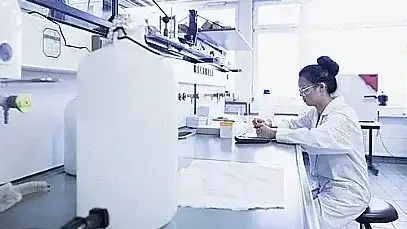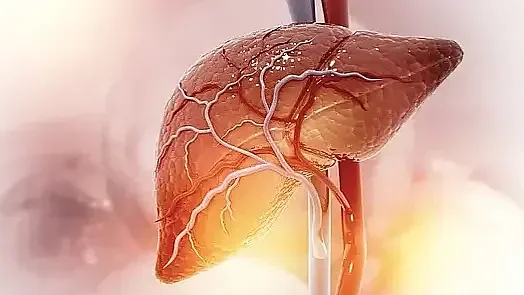Can an Anti-Inflammatory Diet Reverse NAFLD?

Understanding Non-Alcoholic Fatty Liver Disease (NAFLD)
Non-Alcoholic Fatty Liver Disease (NAFLD) is a prevalent condition affecting approximately 25% of the global population. Characterized by excessive fat accumulation in liver cells without significant alcohol consumption, NAFLD ranges from simple steatosis to its more severe form, non-alcoholic steatohepatitis (NASH), which can lead to fibrosis, cirrhosis, or hepatocellular carcinoma. Understanding whether an anti-inflammatory diet can reverse NAFLD is critical, given the absence of FDA-approved pharmacological treatments for this condition.
Global NAFLD Statistics
Non-Alcoholic Fatty Liver Disease (NAFLD) affects approximately 25% of the global population, making it one of the most common liver conditions worldwide.
How Inflammation Drives NAFLD Progression
NAFLD’s progression is closely tied to chronic low-grade inflammation, often triggered by metabolic dysfunction. Insulin resistance, oxidative stress, and an imbalance in gut microbiota are major contributors. These factors lead to the activation of inflammatory pathways, such as the release of cytokines like tumor necrosis factor-α (TNF-α) and interleukin-6 (IL-6). Addressing inflammation through dietary strategies is, therefore, a promising non-pharmacological approach.
Diet’s Role in Managing NAFLD: A Closer Look
A Key Question: Can an Anti-Inflammatory Diet Reverse NAFLD?
Emerging research suggests that adopting an anti-inflammatory diet can significantly improve liver health and, in some cases, reverse NAFLD. By targeting the underlying causes of inflammation and insulin resistance, these dietary patterns help mitigate hepatic fat accumulation and reduce liver enzymes.
Key Components of an Anti-Inflammatory Diet
- Rich in Polyphenols: Polyphenol-rich foods, such as berries, green tea, and olive oil, exhibit potent antioxidant and anti-inflammatory properties. These compounds neutralize reactive oxygen species (ROS) and suppress inflammatory pathways.
- High in Omega-3 Fatty Acids: Found in fatty fish like salmon and mackerel, omega-3s reduce hepatic inflammation and improve lipid metabolism by decreasing triglyceride synthesis and increasing fatty acid oxidation.
- Low in Refined Carbohydrates: Refined sugars and high-fructose corn syrup exacerbate insulin resistance and promote de novo lipogenesis (new fat production in the liver). Substituting these with complex carbohydrates such as whole grains is essential.
- Adequate Dietary Fiber: Fiber from vegetables, fruits, and legumes supports gut health and reduces systemic inflammation by modulating gut microbiota and enhancing short-chain fatty acid (SCFA) production.
- Mediterranean Diet Pattern: The Mediterranean dietary pattern has demonstrated significant potential in reversing NAFLD through its emphasis on anti-inflammatory foods. This approach includes abundant olive oil, omega-3 rich fish, whole grains, and polyphenol-containing vegetables and fruits. Studies indicate that adherence to this diet is associated with improved liver enzyme levels and reduced hepatic fat content.
- DASH Diet: The Dietary Approaches to Stop Hypertension (DASH) diet has also shown promise in managing NAFLD. This diet focuses on fruits, vegetables, whole grains, and lean proteins while limiting sodium intake. Research indicates that adherence to the DASH diet correlates with lower prevalence rates of NAFLD.
Evidence Supporting Anti-Inflammatory Diets in NAFLD
A growing body of clinical evidence supports the efficacy of anti-inflammatory diets in managing NAFLD:
Clinical Trials: Multiple controlled trials have demonstrated improvements in liver enzyme levels, hepatic fat content, and inflammatory markers when patients adhere to anti-inflammatory dietary protocols.
Molecular Mechanisms: The potential of anti-inflammatory foods to reverse NAFLD operates through several pathways:
- Reduction of pro-inflammatory cytokine production
- Enhancement of insulin sensitivity
- Modulation of gut microbiota composition
- Activation of anti-inflammatory signaling cascades
Learn about the relationship between an anti-inflammatory diet, and NAFLD.
Practical Steps to Implement an Anti-Inflammatory Diet
1. Prioritize Whole Foods: Focus on minimally processed foods including fresh fruits, vegetables, whole grains, and lean proteins.
2. Incorporate Anti-Inflammatory Superfoods:
- Berries: Blueberries, strawberries, and raspberries are rich in anthocyanins which reduce oxidative stress.
- Fatty Fish: Aim for two servings per week of salmon or mackerel for omega-3 fatty acids.
- Leafy Greens: Spinach, kale, and arugula are excellent sources of vitamins and polyphenols.
- Nuts and Seeds: Almonds, walnuts, and flaxseeds offer anti-inflammatory fats and fiber.
3. Avoid Pro-Inflammatory Foods: Limit intake of trans fats, saturated fats (e.g., fried foods), refined sugars, and high-fructose corn syrup.
4. Balance Macronutrients: Ensure a balanced intake of carbohydrates, proteins, and fats tailored to individual energy needs.
Limitations and Considerations
While the potential of an anti-inflammatory diet to reverse NAFLD is promising, it is essential to recognize its limitations. Advanced stages of NAFLD may not be reversible solely through dietary interventions; comprehensive medical management may be necessary. Additionally, individual responses to dietary changes can vary; thus personalized nutrition plans guided by healthcare professionals are crucial.
Integrating Dietary Changes with Lifestyle Interventions
- Physical Activity: Combining an anti-inflammatory diet with regular exercise enhances insulin sensitivity and promotes weight loss.
- Stress Management: Chronic stress can exacerbate inflammation; practices like mindfulness meditation or yoga can complement dietary efforts.
- Regular Monitoring: Patients with NAFLD should undergo regular monitoring of liver function tests to assess the effectiveness of dietary interventions.
Conclusion
So, can an anti-inflammatory diet reverse NAFLD? While it may not be a cure-all, evidence strongly supports its role in halting disease progression and potentially reversing early-stage NAFLD. By addressing inflammation through targeted dietary changes—such as adopting Mediterranean or DASH diets—individuals can improve metabolic health and promote weight loss effectively. However, personalized medical guidance remains crucial for achieving optimal outcomes.
Share this article

Dr. Irene Paragas, MD
I am a Medical Doctor, Registered Nutritionist-Dietitian, and seasoned virtual professional. See Full Bio.
-
1. Eslam M, Newsome PN, Sarin SK, et al. A new definition for metabolic associated fatty liver disease: An international expert consensus statement. J Hepatol, 2020.
-
2. Hasegawa T, Yoneda M, Nakamura K, et al. Role of dietary composition in nonalcoholic fatty liver disease. J Gastroenterol Hepatol, 2021.
-
3. Zhang X, Wu X, Chen S, Wang J, Chen Y. Effectiveness of the Mediterranean Diet in Nonalcoholic Fatty Liver Disease Treatment. Hepatology International, 2023.
-
4. Martinez-Rodriguez R, Gil A, Maldonado J. Anti-inflammatory Dietary Patterns and NAFLD: A Systematic Review. Journal of Hepatology, 2023.
-
5. Singh R, Kaur N, Kishore L, Kumar R. Role of Anti-inflammatory Foods in NAFLD Management: Current Evidence and Future Perspectives. World Journal of Gastroenterology, 2023.
-
6. Lee J, Kim Y, Park H, Kim S. Molecular Mechanisms of Diet-Induced NAFLD Reversal: A Comprehensive Review. Nature Reviews Gastroenterology & Hepatology, 2023.
-
7. Thompson M, Anderson R, Wilson P. Clinical Guidelines for Dietary Management of NAFLD: An Evidence-Based Approach. American Journal of Clinical Nutrition, 2023.
How to Diagnose Lipodystrophy-Associated Fatty Liver Lipodystrophy-associated fatty liver disease is a complex condition that requires a multi-layered...
How Family History Increases the Risk of Fatty Liver Understanding how family history increases the risk of fatty liver is crucial for proactive health management.
Lifestyle Changes for Genetic Fatty Liver Prevention Fatty liver disease poses significant risks to long-term health, and its genetic component can...

You might enjoy more articles by
Dr. Irene Paragas, MD
 Disease
Disease Diets
Diets Recipes
Recipes Supplements
Supplements Management
Management Calculators
Calculators Quizzes
Quizzes Glossary
Glossary
























